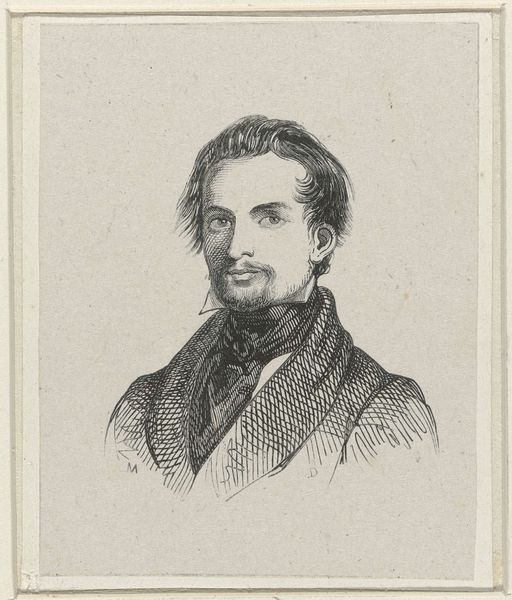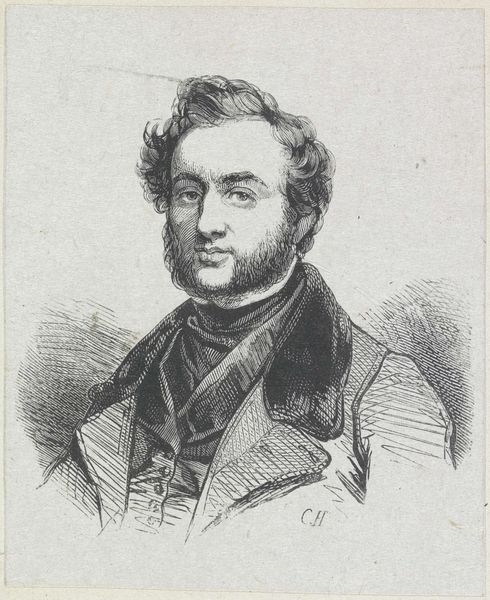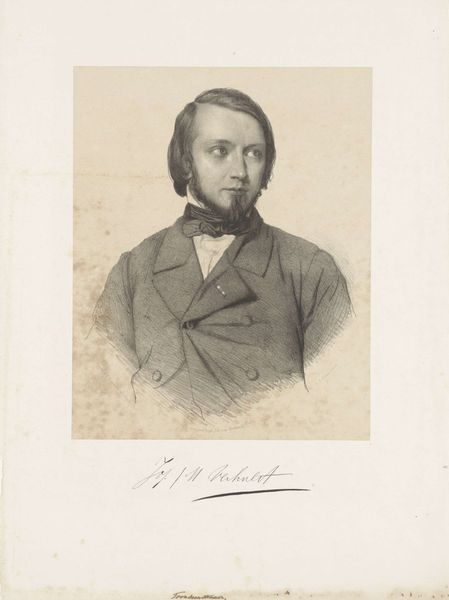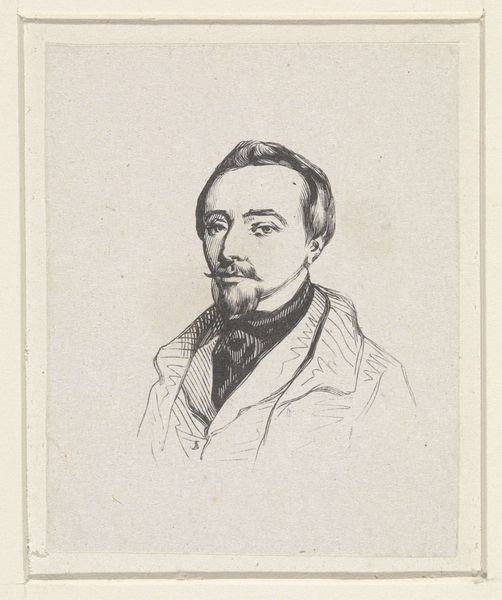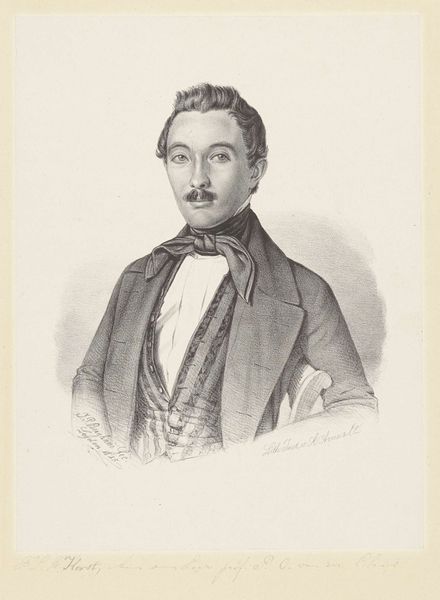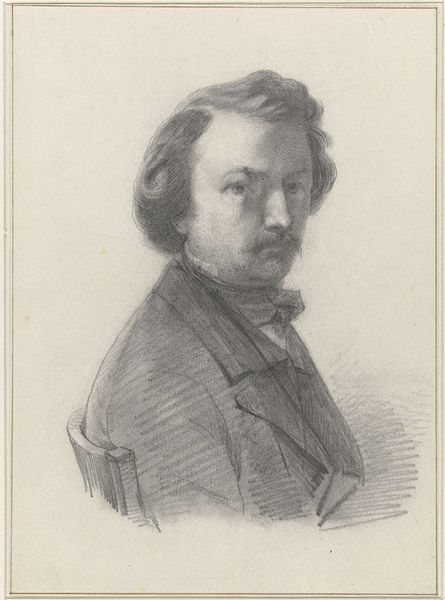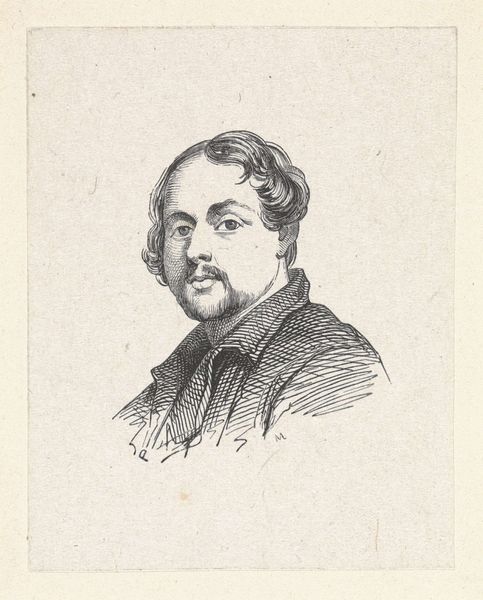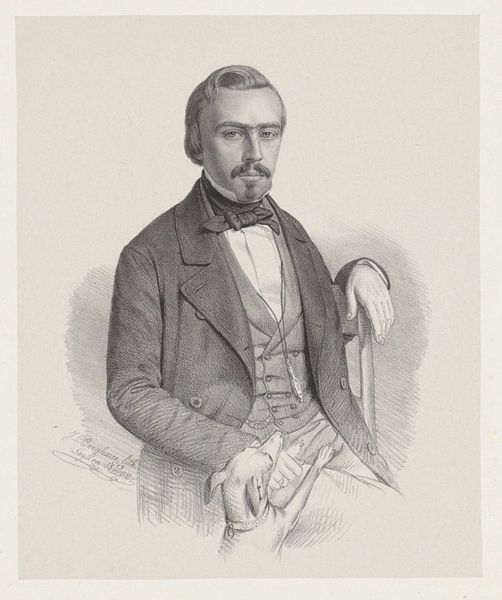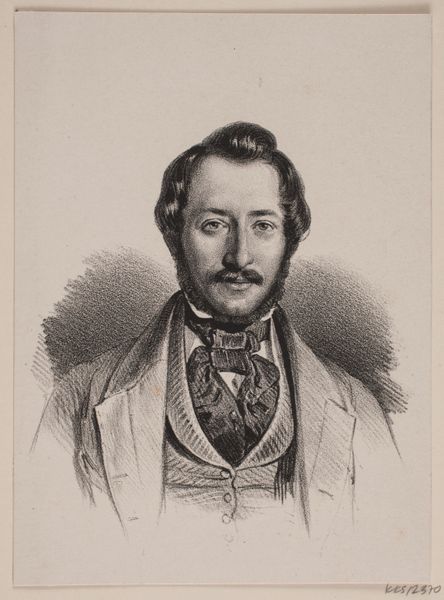
drawing, print, engraving
#
portrait
#
pencil drawn
#
drawing
#
toned paper
#
facial expression drawing
# print
#
pencil sketch
#
old engraving style
#
caricature
#
personal sketchbook
#
portrait reference
#
sketchbook drawing
#
portrait drawing
#
engraving
Dimensions: height 70 mm, width 55 mm
Copyright: Rijks Museum: Open Domain
Editor: This is "Portret van Johannes de Mare," a print or engraving from around 1800-1900 by an artist known only as Monogrammist ML. The sitter's intense gaze really draws me in. How do you interpret this work? Curator: The intensity you perceive is compelling. I'm particularly drawn to the relationship between portraiture and power during this era. Consider how portraits were often commissioned by the elite to solidify their social standing. Do you think this image reinforces or perhaps challenges those power dynamics, given its medium as a print, which is often more accessible? Editor: That's interesting. Being a print makes it reproducible, which is accessible but does that mean that his importance as an individual is diminished? It feels like an odd conflict. Curator: Exactly. The piece raises critical questions about access and representation. It’s not just about capturing a likeness; it’s about the cultural circulation of images and their potential to either democratize or reinforce existing social hierarchies. What does it mean to have your image copied and spread? Editor: So, while it’s a portrait of an individual, it also exists in a wider context of social meaning. The method by which it was made changes that meaning completely. Curator: Precisely! Consider also that portraits from that period were not always flattering likenesses, so that adds to the conversation. Looking closer at those detailed engravings we see more clearly who Johannes was in that society and perhaps also about the artist. How does thinking about this context shift your initial reading of the portrait? Editor: It makes me see it less as an isolated depiction and more as a statement, about both the individual and the society he lived in. It’s quite profound to have those conversations just by observing! Curator: It is, and that's precisely why situating artworks within their historical and social contexts can offer invaluable insights. Editor: Thanks! It gives me a whole new lens for looking at art.
Comments
No comments
Be the first to comment and join the conversation on the ultimate creative platform.
